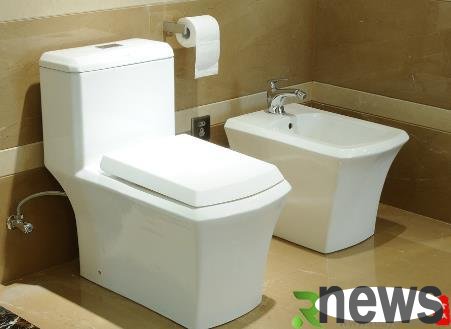Every household has a toilet, but not everyone knows it to use the toilet correctly. Don't you know that you need to cover the toilet seat if you flush? We usually use to flushing the toilet at will, but we don’t know that we need to cover the toilet seat. Is there any principle in this? Below, the editor will share with you why you need to cover the toilet lid and toilet hygiene and health care knowledge.

Why should I cover the toilet with a toilet lid? Reasons for flushing the toilet cover
Reasons for flushing the toilet cover
1. Flushing the toilet cover
If the toilet cover is opened when flushing, the instantaneous cyclone in the toilet can bring bacteria or microorganisms to a 6-meter-high air and suspend it in the air for several hours, and then fall on the walls and toothbrushes, mouthwash cups, and towels.
Dr. Philip Terno, NYU, pointed out that if the toilet lid is opened when flushing, the instantaneous cyclone in the toilet can bring bacteria or microorganisms up to 6 meters high in the air and suspend in the air for up to several hours, then land on walls and items. Nowadays, most families use the toilet, wash, and shower in the bathroom. Toothbrushes, mouthwash cups, towels, etc. live in the same room with the toilet, so they are naturally susceptible to bacterial contamination. Therefore, you should develop the habit of covering the toilet lid when flushing.
2. Most bacteria on the toilet ring should be cleaned. Professor Yu Qingfu of Fudan University School of Public Health pointed out that the survey found that 32% of toilets had dysentery bacteria on them, and one of them was called "Song Nei" and survived on the toilet ring for up to 17 days. Another experimental report also pointed out that 100 million polio viruses were put into the toilet bowl, and 3,000 viruses were splashed on the seat ring.
The places where pollution is so serious, it is the most in contact with people's skin. Therefore, it is necessary to focus on cleaning and wipe it with diluted household disinfectant every one or two days. As for cloth gaskets, it is best not to use them. If they must be used, they should be cleaned and disinfected frequently. If possible, you might as well change to a toilet with antibacterial function and splash-proof design.
For vortex siphon stool, due to auxiliary punching, the filth will be absorbed into the inner wall of the ceramic through auxiliary punching. Over the years, there will be a lot of bacteria and should be disinfected frequently.
3. Clean the dirt in the toilet in time
The toilet is easily contaminated with urine stains, feces and other dirt. If there are still residues after flushing, be sure to use a toilet brush to clean it in time, otherwise it will easily form yellow stains and will also breed mold and bacteria. In addition to near the pipe opening, the water outlet of the inner edge of the toilet and the outside of the base are all places where dirt is hidden. When cleaning, lift the toilet ring first and spray it with toilet cleaner. After a few minutes, use a toilet brush to thoroughly brush. It is best to use a thin-headed brush, which can better clean the inner edge of the toilet and the depth of the pipe opening. Then scrub the base and other gaps.
4. Try not to set up wastebaskets on the toilet
You can also place gradually dissolved automatic toilet cleaner in the water tank or hang a wall-mounted disinfection hydrant to achieve the effect of cleaning, descaling, disinfection and sterilization through each flushing.
Most families will set up a wastebasket next to the toilet to store used toilet paper, but this will cause bacteria to spread with the air, because few people can clean it up at any time, at least for a day or two, and the longer the time, the more bacteria it breeds.
The toilet paper should be thrown into the toilet and flushed away. As long as it is not too thick or too tough, the toilet paper can usually become soft quickly in the water, so there is no need to worry about blockage. If necessary, just prepare a sanitary bag, there is no need to set up a wastebasket. If you have to use it, you should also choose a cover to prevent bacteria from spreading and deal with used toilet paper in time.
5. The toilet brush should be kept clean and dry. The toilet brush is the hero of keeping the toilet clean. However, if you do not pay attention to cleaning and drying, it will also become a source of pollution. Every time you brush dirt, dirt will inevitably be stained on the brush. It is best to rinse the water again, rinse it clean, drain the water, spray disinfectant, or soak it regularly with disinfectant and place it in a suitable place. It is recommended to hang the toilet brush up, not put it in a corner, nor in an airtight container.